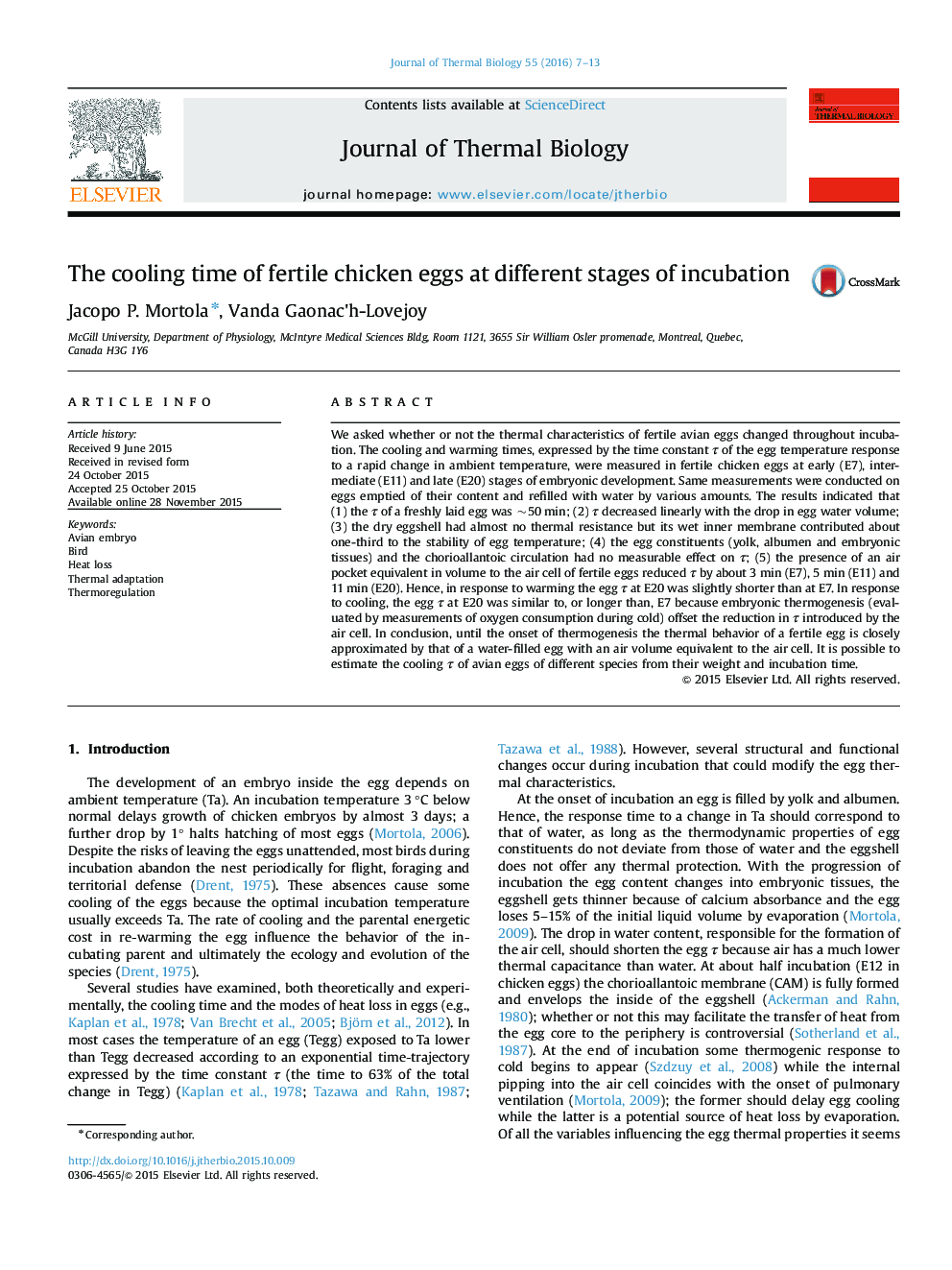| Article ID | Journal | Published Year | Pages | File Type |
|---|---|---|---|---|
| 2842687 | Journal of Thermal Biology | 2016 | 7 Pages |
•The time constant (τ) of a fresh chicken egg to changes in temperature was ~50 min.•The τ value decreased as the air cell volume increased.•The egg constituents and the chorioallantoic circulation had no measurable effect on τ.•The wet inner membrane of the eggshell contributed about one-third of τ.•In cold, embryonic thermogenesis compensated the decrease in τ caused by the air cell.
We asked whether or not the thermal characteristics of fertile avian eggs changed throughout incubation. The cooling and warming times, expressed by the time constant τ of the egg temperature response to a rapid change in ambient temperature, were measured in fertile chicken eggs at early (E7), intermediate (E11) and late (E20) stages of embryonic development. Same measurements were conducted on eggs emptied of their content and refilled with water by various amounts. The results indicated that (1) the τ of a freshly laid egg was ~50 min; (2) τ decreased linearly with the drop in egg water volume; (3) the dry eggshell had almost no thermal resistance but its wet inner membrane contributed about one-third to the stability of egg temperature; (4) the egg constituents (yolk, albumen and embryonic tissues) and the chorioallantoic circulation had no measurable effect on τ; (5) the presence of an air pocket equivalent in volume to the air cell of fertile eggs reduced τ by about 3 min (E7), 5 min (E11) and 11 min (E20). Hence, in response to warming the egg τ at E20 was slightly shorter than at E7. In response to cooling, the egg τ at E20 was similar to, or longer than, E7 because embryonic thermogenesis (evaluated by measurements of oxygen consumption during cold) offset the reduction in τ introduced by the air cell. In conclusion, until the onset of thermogenesis the thermal behavior of a fertile egg is closely approximated by that of a water-filled egg with an air volume equivalent to the air cell. It is possible to estimate the cooling τ of avian eggs of different species from their weight and incubation time.
